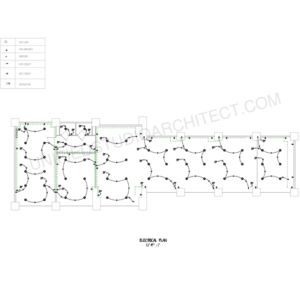What to Know Before Sketching Electrical Blueprints: A Guide By Unified Studio Architect

Introduction:
Sketching electrical blueprints is a crucial skill for electricians, engineers, and designers. It ensures that electrical systems are installed safely, efficiently, and in compliance with regulations. Before diving into blueprint creation, it’s essential to understand the key elements and best practices involved.
Understanding Electrical Blueprints:
Electrical blueprints, also known as electrical schematics or diagrams, are technical drawings that illustrate the layout and connections of electrical systems within a building. These blueprints include information on wiring, circuit breakers, outlets, switches, lighting fixtures, and other electrical components1.
Key Components of Electrical Blueprints
- Title Block: Provides essential information about the blueprint, including the project name, date, scale, and the names of the designer and drafter.
- Legend: Explains the symbols and abbreviations used in the blueprint, making it easier to interpret the diagram.
- Floor Plan: Shows the layout of the building, including walls, doors, windows, and other structural elements. Electrical components are overlaid on this plan1.
- Wiring Diagram: Illustrates the connections between electrical components, showing how wires run through the building.
- Panel Schedule: Lists the circuit breakers and their corresponding loads, providing details on the electrical distribution within the building.

Best Practices for Sketching Electrical Blueprints
- Accuracy: Ensure that all measurements and details are precise to avoid errors during installation.
- Clarity: Use clear and consistent symbols and labels to make the blueprint easy to understand.
- Compliance: Follow local and international standards, such as the National Electrical Code (NEC) and International Building Code (IBC), to ensure safety and legality.
- Communication: Collaborate with other trades, such as HVAC and plumbing, to coordinate the placement of electrical components.
- Safety: Prioritize safety by clearly marking hazardous areas and ensuring proper grounding and bonding.
Resources for Learning More
- ABC SoCal Blog: Offers a comprehensive guide to reading electrical blueprints, including deciphering symbols and understanding key elements.
- TMUK Group: Provides a step-by-step guide on how to read electrical blueprints, with practical examples and tips.
- FieldSelect Electric: Discusses blueprint analysis for electrical contractors, highlighting challenges and practical applications.
Conclusion:
Sketching electrical blueprints is a vital skill for anyone involved in electrical installations. By understanding the key components, following best practices, and utilizing available resources, you can create accurate and effective blueprints that ensure safe and efficient electrical systems.
